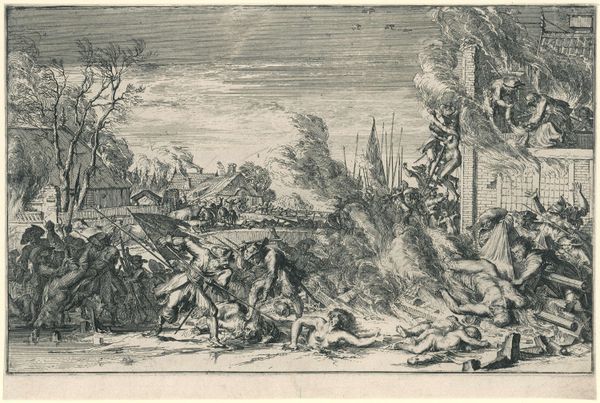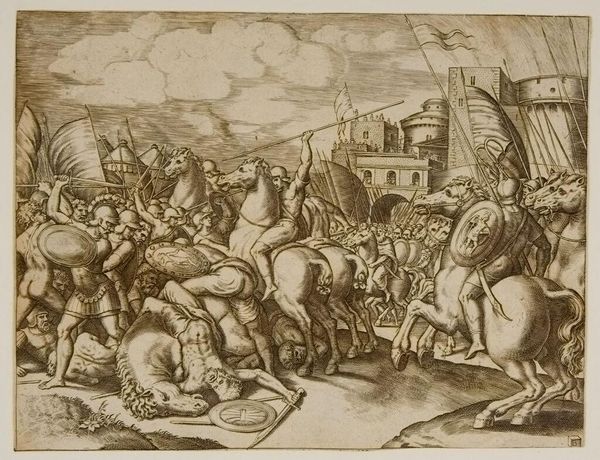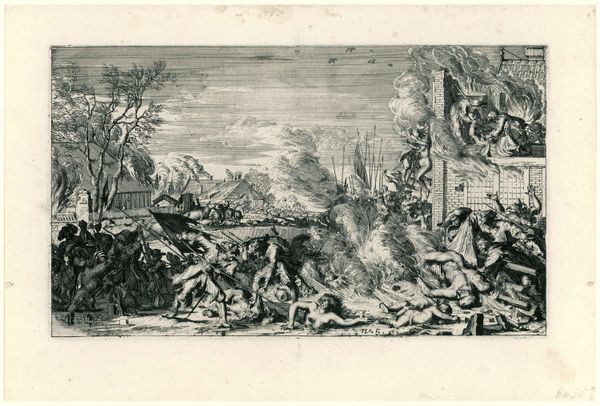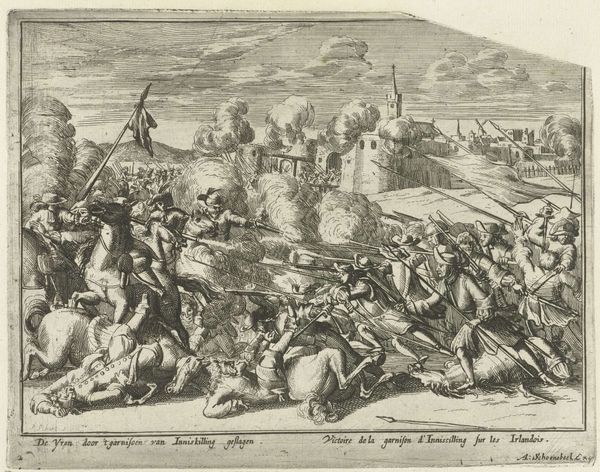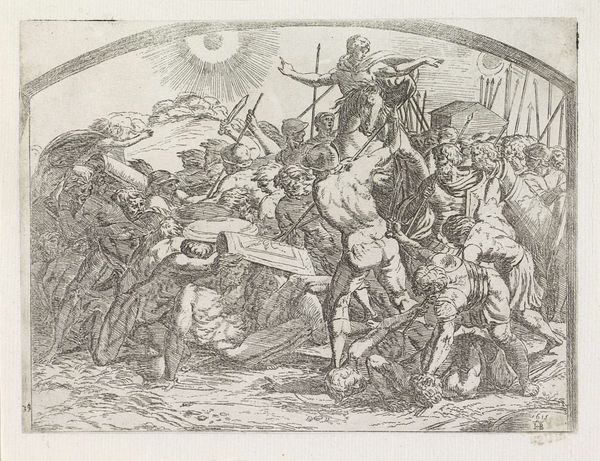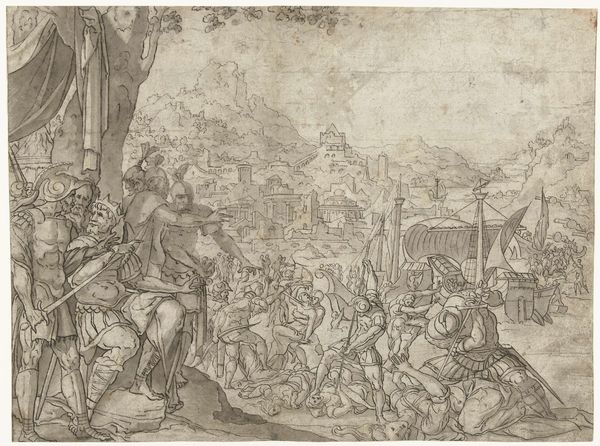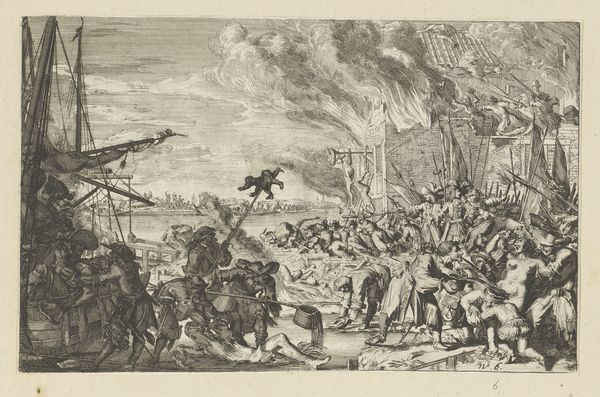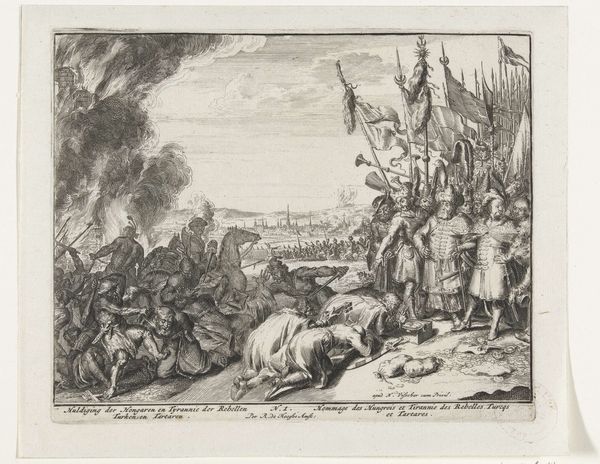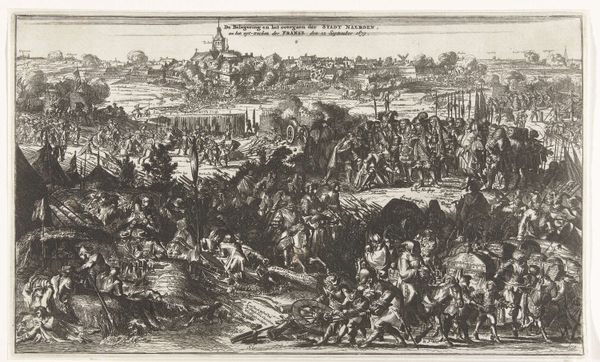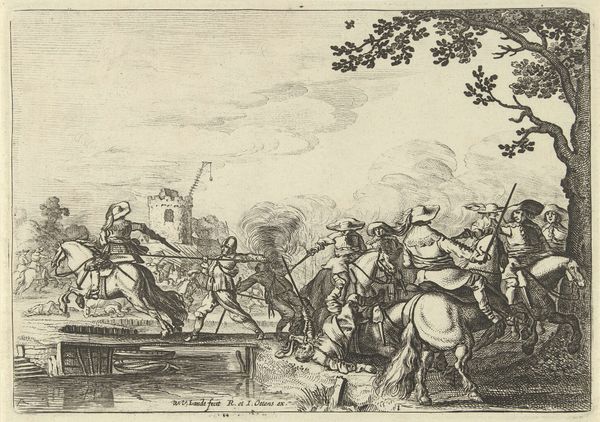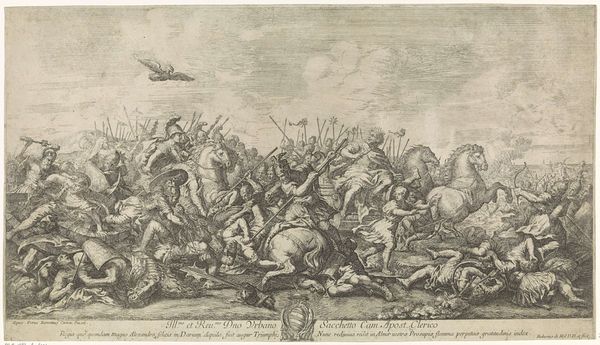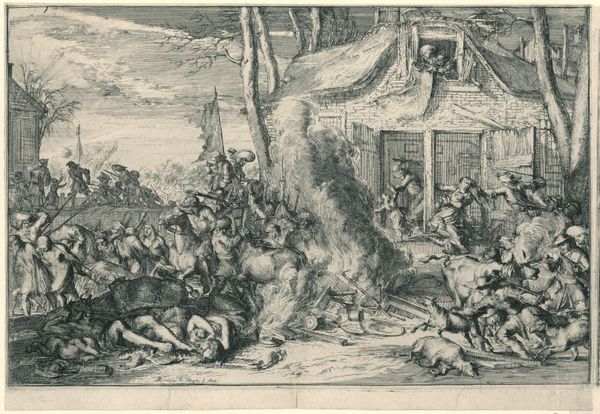
print, engraving
#
ink drawing
#
baroque
#
pen drawing
#
dutch-golden-age
# print
#
pen sketch
#
history-painting
#
engraving
Dimensions: height 214 mm, width 308 mm
Copyright: Rijks Museum: Open Domain
Editor: This engraving, "Atrocities in a Village, 1672" by Romeyn de Hooghe, is a flurry of dark lines depicting a violent scene. The chaotic composition really evokes the terror of war, I think. What strikes you most when you look at it? Curator: The immediate thing that catches my eye is the blatant propagandistic nature of the work. Consider its date, 1673; the engraving is directly responding to the events of 1672, the "Disaster Year" in Dutch history, when the Republic was invaded by multiple nations. This wasn't just history-telling, it was shaping public opinion. How do you think images like this functioned? Editor: So, almost like political cartoons, intended to provoke a response? I can see that. The detail is gruesome, but effective. It definitely makes you feel something. Curator: Precisely. De Hooghe wasn't merely documenting; he was constructing a narrative of victimhood and inciting outrage against the invaders, particularly the French, who were often painted as barbaric. We must consider that the art market was influenced and reflected socio-political perspectives during this period. Did this piece solidify negative feelings, or work to encourage national sentiment? Editor: That’s fascinating. I guess it really speaks to how art isn't always just about beauty or skill, it can be a powerful tool for shaping how people think and feel about what's happening around them. Curator: Indeed, the public role of art. And its manipulation. This work encourages us to think critically about the stories images tell us, and the agendas they might serve. Editor: I hadn't thought of art in the 17th Century serving this role, like a very opinionated newspaper. Curator: A great observation. It underscores how important it is to view art within its historical and social context. It makes it so much more than just what is represented. Editor: Thank you, it gives me a lot to think about!
Comments
No comments
Be the first to comment and join the conversation on the ultimate creative platform.
